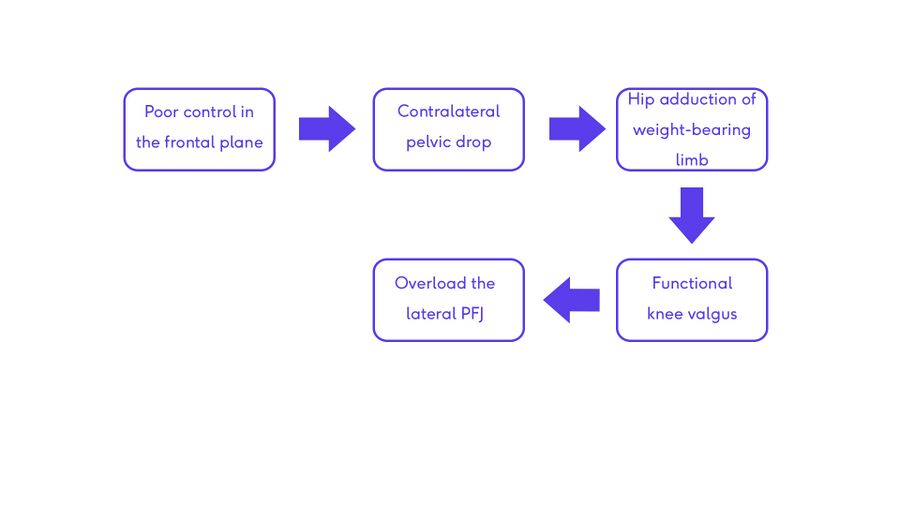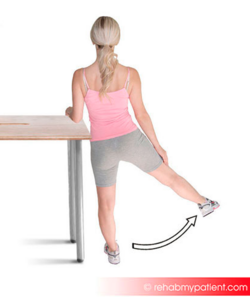Gluteal Considerations for Patellofemoral Pain
Original Editor - User Name
Top Contributors - Jacquie Kieck, Wanda van Niekerk, Jess Bell, Kim Jackson and Tarina van der Stockt
Introduction[edit | edit source]
Patella malalignment is influenced not only by the patella, but also by the femur and trochlear. The position of the femur and trochlear can be altered by the gluteal muscles, hence the need to consider and assess the gluteal muscles in the evaluation of patellofemoral pain. The assessment of the influence of the gluteal muscles in patellofemoral pain is not performed in isolation. Patellofemoral pain should be assessed holistically considering various factors such as local factors around the knee, whole limb assessment and psychosocial factors.
Why Do We Need to Consider Each Muscle?[edit | edit source]
A thorough assessment of gluteal function will allow the clinician to identify the plane in which a dysfunction exists, and thereby allow for specific rehabilitation prescription.
Functional Role of the Gluteal Muscles[edit | edit source]
Gluteus Medius as an Abductor in the Frontal Plane[edit | edit source]
Gluteus medius acts as an abductor of the hip in the frontal plane. Poor hip abduction control in a single-stance, weight-bearing position allows for contralateral pelvis drop. In this scenario, the weight-bearing limb essential falls into adduction, causing a functional valgus at the knee. This in turn creates greater load on the lateral patellofemoral joint.
Gluteus medius is assessed in the frontal plane by performing hip abduction. Claire recommends maintaining the resistance for 10 seconds to ensure that the tonic performance of the muscle is assessed (and not the phasic performance of the muscle which would be what is assessed in the first couple of seconds of holding the position against resistance). This is important because gluteus medius should act as a postural endurance to stabilise the pelvis.
Assessment of the gluteus medius can also be performed in a weight-bearing position assessing the ability of the person to control the pelvis as they perform a contralateral hip drop when standing on a step. This position allows for concentric and eccentric assessment of the gluteus medius function.
Exercises for Gluteus Medius in the Frontal Plane[edit | edit source]
- Screenshot 2022-05-26 at 20.31.27.jpg
Standing Hip Abduction
- Screenshot 2022-05-26 at 20.31.06.jpg
Sidelying Hip Abduction
Resources[edit | edit source]
- bulleted list
- x
or
- numbered list
- x








